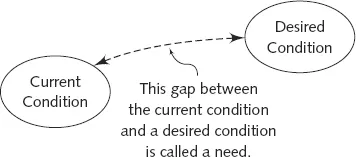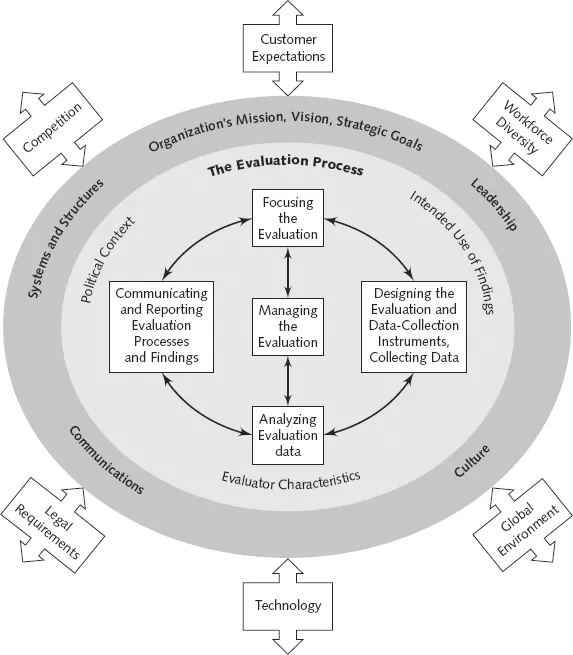
A Practical Guide to Needs Assessment
- English
- ePUB (mobile friendly)
- Available on iOS & Android
A Practical Guide to Needs Assessment
About this book
A Practical Guide to Needs Assessment, Third Edition
For fifteen years, A Practical Guide to Needs Assessment has been the go-to text for those who are seeking useful, systematic approaches to needs assessment. Needs assessment is the first step in training, performance improvement, and community development projects.
This thoroughly revised and updated edition contains a treasury of resources including a toolkit of ready-to-use templates and job aids that you can customize for your own use. Illustrative case studies and tips show how to assess needs for individuals, teams, organizations, government agencies, and communities.
This book combines a how-to text and reference tool for trainers, performance improvement professionals, and students. Managers and community leaders use it to get to the root of their learning and performance problems, make effective decisions, and obtain support for their most pressing issues.
Updates to the third edition include:
- Links to online resources, including a needs assessment book that you can download for free, ethical guidelines, and vendors who assess individual, group and organizational needs.
- A new chapter on the complex needs assessment approach with new toolkit forms.
- A summary of the recent advances in our knowledge about learning, training, and performance that you can use to quickly prepare for client meetings.
- Guidelines on workforce surveys, such as employee engagement surveys.
- An Instructor's Guide that contains discussion questions, assessments materials, and new exercises for each chapter.
You can use this book to quickly access up-to-date information on the fundamentals of needs assessment including current models, theories, and resources. You can also learn how to manage and report a needs assessment project and access professional ethical guidelines. Learn five approaches to needs assessment: knowledge and skills analysis, job and task analysis, competency-based needs assessment, strategic needs assessment, and complex needs assessment.
Frequently asked questions
- Essential is ideal for learners and professionals who enjoy exploring a wide range of subjects. Access the Essential Library with 800,000+ trusted titles and best-sellers across business, personal growth, and the humanities. Includes unlimited reading time and Standard Read Aloud voice.
- Complete: Perfect for advanced learners and researchers needing full, unrestricted access. Unlock 1.4M+ books across hundreds of subjects, including academic and specialized titles. The Complete Plan also includes advanced features like Premium Read Aloud and Research Assistant.
Please note we cannot support devices running on iOS 13 and Android 7 or earlier. Learn more about using the app.
Information
Part I
Fundamentals of Needs Assessment
Chapter One
Overview of Needs Assessment
PURPOSE
- Describe what a needs assessment is.
- Identify the purposes and characteristics of a needs assessment.
- Define key terms.
- Learn how the definitions of needs assessment, sources of data, and data-collection and analysis strategies can be combined to create a needs assessment.
- Describe five approaches to needs assessment.
OVERVIEW
- “The vice president is ready to start his personal development program. How should he proceed?”
- “Team production is down! The engineers say the technician team is struggling with the new process. The team disagrees. Can you give them all training or something?”
- “We need to update the curriculum in our graduate program. What should the new curriculum include?”
- “Two major employers are moving out of our community. What actions should we take to keep employers here and to entice other employers to move to this community?
- “What issues are of greatest concern to the communities in this region?”
- “Which workforce development initiatives should we invest in to make our country more competitive in the global marketplace?”
- “Next year our plant will continue the projects in Six Sigma quality and culture change. We also will implement new manufacturing procedures, install new equipment, and introduce new product lines. If employees try to make all these changes at once, productivity will fall. Where do you recommend we start? How can these efforts be integrated?”
SIMILARITIES AMONG NEEDS ASSESSMENT REQUESTS

- Solving a current problem
- Avoiding a past or current problem
- Creating or taking advantage of a future opportunity
- Providing learning, development, or growth


DIFFERENCES AMONG REQUESTS THAT LEAD TO NEEDS ASSESSMENT
Table of contents
- Cover
- Contents
- Title
- Copyright
- List of Figures
- List of Needs Assessment Toolkit Forms
- Preface
- Acknowledgments
- Introduction
- Part One: Fundamentals of Needs Assessment
- Part Two: Getting down to Brass Tacks
- Part Three: Managing a needs Assessment
- Part Four: Needs Assessment Toolkit
- Glossary
- References
- About the Authors
- Index